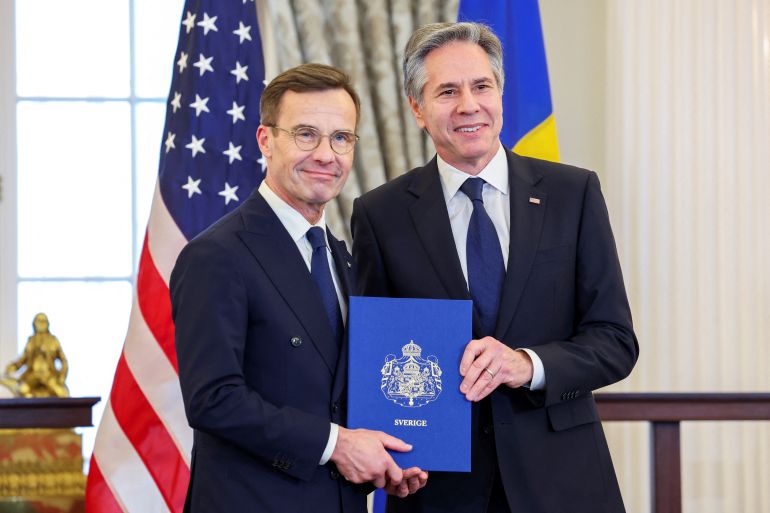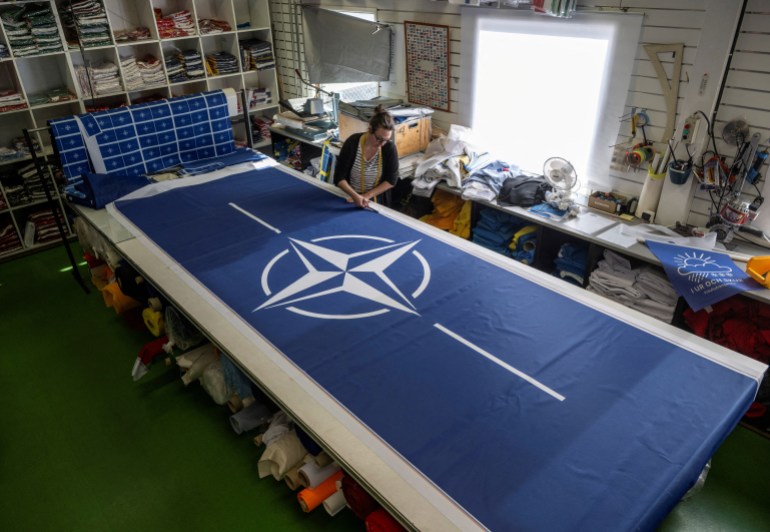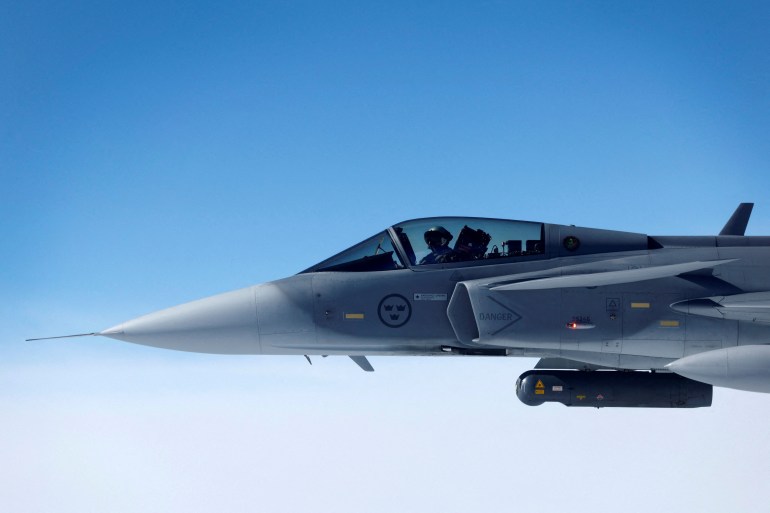Sweden officially joins NATO alliance, ending decades of neutrality
The Nordic nation applied to join the military alliance in May 2022, but faced delays from Turkey and Hungary.

Sweden has officially joined the NATO military alliance, ending decades of neutrality amid soaring concerns about Russia’s aggression in Europe following its invasion of Ukraine.
“Unity and solidarity will be Sweden’s guiding lights as a NATO member,” Swedish Prime Minister Ulf Kristersson said in a statement delivered in Washington, DC after a meeting with US Secretary of State Antony Blinken.
Keep reading
list of 4 itemsHungary could ratify Sweden’s NATO membership in February: PM Orban
Hungary, Sweden sign fighter jet deal before NATO membership vote
Hungary ratifies Sweden’s NATO bid, clearing final obstacle to membership
“We will share burdens, responsibilities and risks with our allies,” he said.
“Good things come to those who wait,” Blinken said as he received Sweden’s accession documents.
“This is a historic moment for Sweden, for our alliance and for the transatlantic relationship,” Blinken said.
At a press conference in Stockholm on Thursday, Sweden’s Minister for Employment and Integration Johan Pehrson labelled the accession “a new security policy era for Sweden”, adding that he had personally been waiting for such a decision for 20 years.
Sweden is now a NATO member. Thank you all Allies for welcoming us as the 32nd member. We will strive for unity, solidarity and burden-sharing, and will fully adhere to the Washington Treaty values: freedom, democracy, individual liberty and the rule of law. Stronger together.
— SwedishPM (@SwedishPM) March 7, 2024
Fears of Russian military threat
Russia’s full-scale invasion of Ukraine on February 24, 2022, sparked Sweden and its neighbour Finland – which shares a 1,340km (832-mile) border with Russia – to apply to join NATO.
“We have to face the world as it is not how we sometimes wish it were,” Kristersson said after Hungary became the last NATO member to ratify Sweden’s accession last week.
Sweden’s lack of military preparedness was revealed in 2013 when Russian bomber planes flew across the Gulf of Finland close to the Swedish island of Gotland in what was believed to be simulated nuclear attacks. Stockholm needed the support of NATO jets to ward the Russian planes away from its airspace.
The next year there were reports that a Russian submarine was operating in the Stockholm archipelago.

Sweden’s shift away from a neutral stance
While Stockholm has been drawing ever closer to NATO over the last two decades, membership marks a clear break with the past, when for more than 200 years, Sweden avoided military alliances and adopted a neutral stance in times of war.
After World War II, it built an international reputation as a champion of human rights, and when the Soviet Union collapsed in 1991, successive governments pared back military spending.
As recently as 2021, its defence minister had rejected NATO membership, only for the then-Social Democrat government to apply, alongside neighbour Finland, just a few months later.
While Finland joined last year, Sweden was kept waiting as Turkey and Hungary delayed ratifying Sweden’s accession.
Turkey approved Sweden’s application in January.
Hungary delayed its move until Kristersson made a visit to Budapest on February 23, during which the two countries agreed on a fighter-jet deal.
Sweden adds cutting-edge submarines and a sizeable fleet of domestically produced Gripen fighter jets to NATO forces and would be a crucial link between the Atlantic and Baltic.
Russia has threatened to take unspecified “political and military-technical counter-measures” in response to Sweden’s move.
